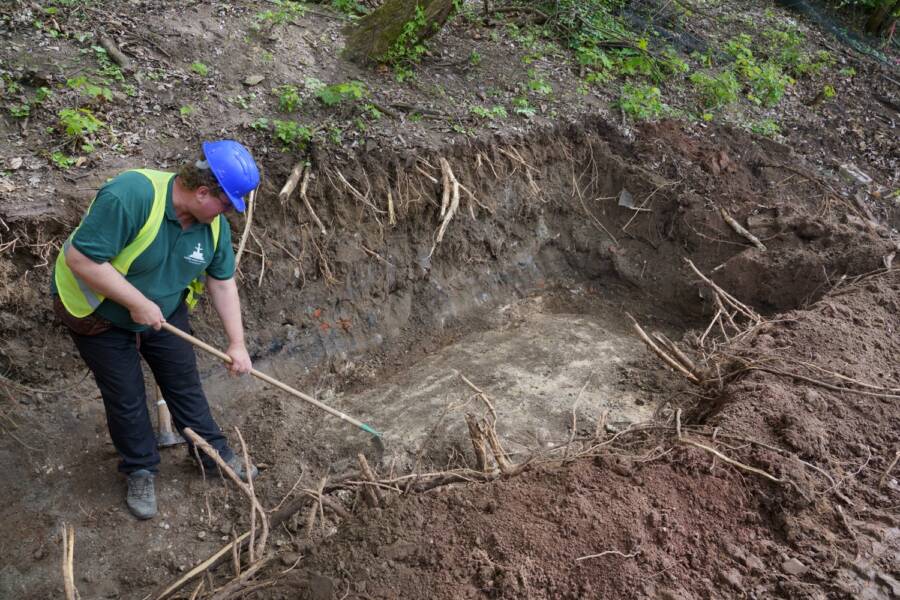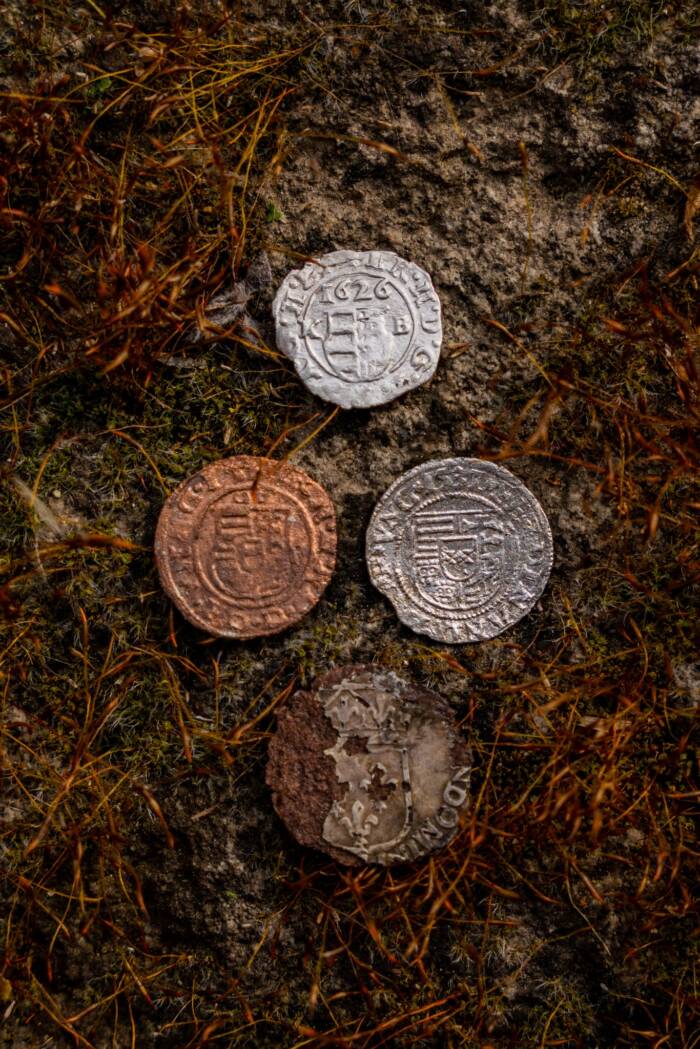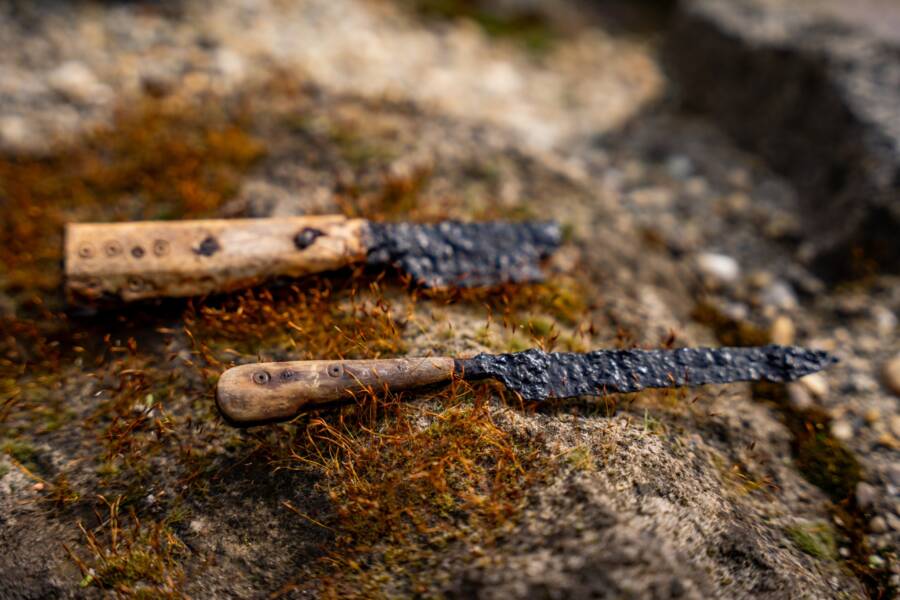This discovery marks the first time that pre-Ottoman structures have been unearthed at Visegrád Castle — and research is just getting underway.

Visegrád Reneszánsza/FacebookArchaeologists working at Visegrád unearthed the medieval church within days of starting.
Amid ongoing archaeological work at Hungary’s Visegrád Castle, researchers unearthed the remains of the Church of the Virgin Mary under what is now a tennis court. The church was built in the 14th century, during the reign of King Sigismund of Luxembourg, on a hill overlooking the Danube River.
What’s more, the church also contained remnants of a bloody clash that took place centuries ago. Now, more excavations are yet to come.
The Discovery Beneath Visegrád Castle’s Tennis Court
The discovery of the church came in March 2024, during the largest-scale research into the history of Visegrád to date. The church was discovered on the first day of the excavations, as researchers unveiled a crypt in front of the high altar and the remains of three bodies with objects alongside them.

Visegrád Reneszánsza/FacebookExcavations only began at Visegrád in March, but researchers are already making a wealth of new discoveries.
“No doubt, most promising for archaeologists was the excavation of the tennis court next to the royal palace, where the Franciscan monastery founded by Sigismund of Luxembourg once stood,” the non-profit organization Várkapitányság told the press, per Hungary Today.
Archaeologists uncovered, for the first time, the remains of a settlement tracing back to the Ottoman occupation in the region, which lasted from 1541 to 1699. In many of the Ottoman buildings, researchers also discovered ancient forged coins and what they believe to be an Ottoman burial site and an oval-shaped oven.
“Just a few hours after the start of the archaeological work, the foundation of the sanctuary of the monastery church was revealed,” the Visegrád Renaissance Development Program wrote in a Facebook post. “Archaeologists have found it on the top of the walls at a relatively small depth and made it possible that this level can be expected throughout the entire area of the church.”

Visegrád Reneszánsza/FacebookSome of the coins found in the Ottoman buildings at the site.
The crypt, however, was what caught their attention next. Among the debris laying in front of the crypt, archaeologists discovered the remains of three bodies, which were accompanied by spurs and several lead pellets — meaning the bodies likely belonged to soldiers.
Researchers are uncertain who exactly the crypt had been built for, though they are optimistic that as the project moves along, the answer will become clear.
Nearby, there was also a copper bowl with indentations suggesting it had been struck by a weapon several times. Perhaps, researchers theorized, it had been used in self-defense.
“This could suggest that the church was not only the scene of looting, but also of a bloody clash,” Várkapitányság noted.
The Ongoing Work At Visegrád Castle

Visegrád Reneszánsza/FacebookPre-Ottoman artifacts unearthed at Visegrád Castle.
The church predates Ottoman occupation, leading researchers to infer that it collapsed around 1544, approximately when Ottoman rule began. Over the centuries, the remains of the royal castle were buried and its wealth and structures lost to time until recent archaeological excavations brought it to light once more.
The Visegrád Renaissance Development Program began in 2021, with the goal of excavating and revitalizing Visegrád Castle and its environs. As part of the project, the Royal Palace, Visegrád Citadel, and Solomon’s Tower will all be rebuilt alongside the Lower Castle.

Visegrád Reneszánsza/FacebookAncient tools unearthed at Visegrád Castle.
“Due to the tennis court still functioning in the area, only two small probes were able to be opened, there was no possibility of further exploration, so hardly carved elements were found from the church shop,” the program said in the Facebook post. “The former tennis court has become a development area of the Visegrád Renaissance program, so the work can begin.”
While archaeological work is just now getting underway, it’s clear from early discoveries that Visegrád has many secrets yet to be uncovered, and future archaeological excavations are bound to reveal more of the site’s history.
After reading about the remarkable discoveries at Visegrád Castle, explore Predjama Castle, the fortress built into a massive cave system. Then, see how Guédolon Castle is being built using ancient techniques.





